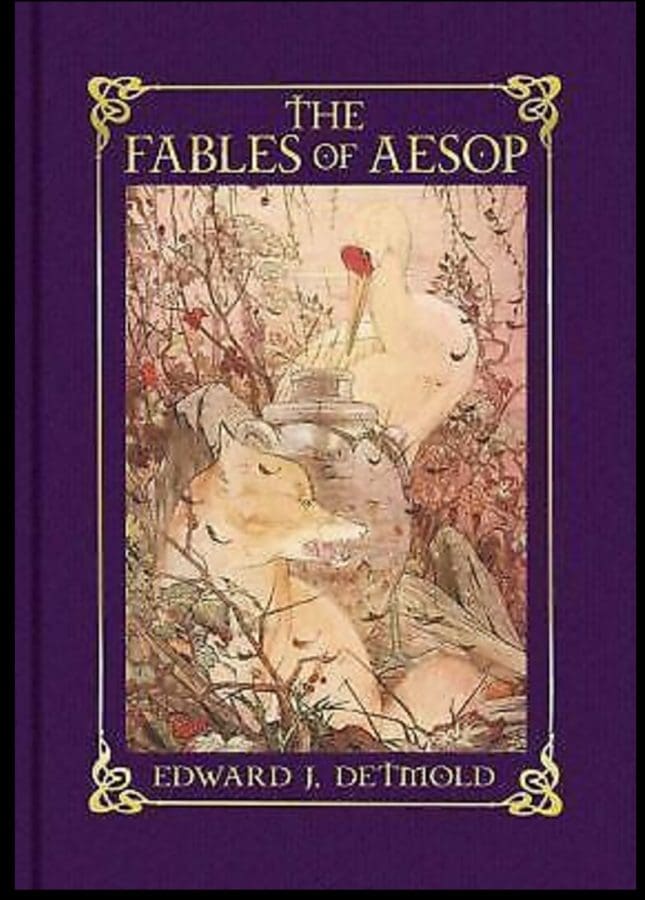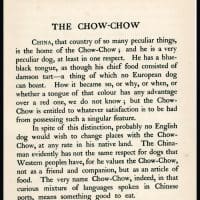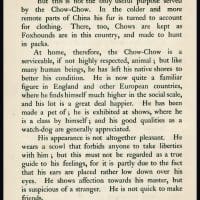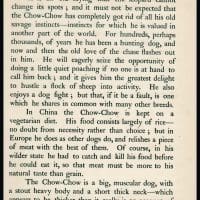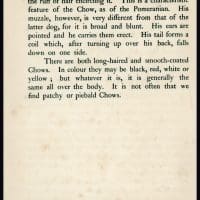1914 E.J. Detmold Chow Illustration – The Book of Baby Dogs
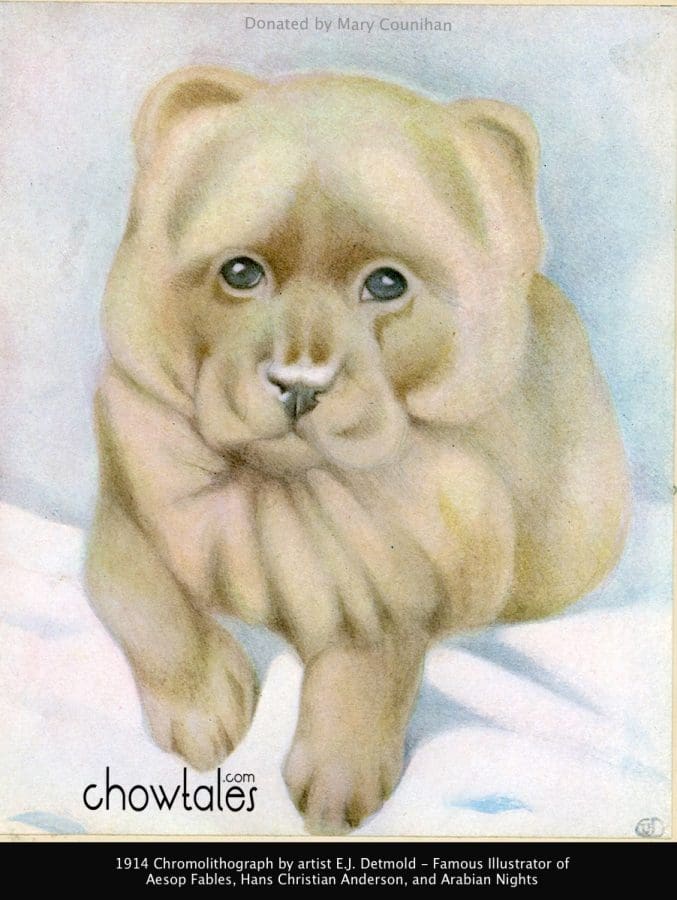
This unusual 93 year old chromolithograph is from the book “FABRE’S BOOK OF BABY DOGS” by E.J. Detmold, published in 1914 by Hodder & Stoughton of New York. E J Detmold (1883-1957) and his twin brother Maurice were prolific Victorian book illustrators. Maurice died in 1908 from inhaling chloroform.
Detmold was a well known illustrator of children’s books including The Fables of Aesop, Hans Christian Andersen’s Fairy Tales, and the Arabian Nights. You can certainly see his original style coming through in his unique rendition of the chow puppy
There is a wonderful 4 page chapter on the chow from the same book (below) which accompanied the illustration . Thank you to Mary Counihan for donating this wonderful find to the archive !
CLICK THUMBNAILS BELOW TO READ THE STORY INCLUDED WITH THE CHOW ILLUSTRATION
What is Chromolithography? This is the first true multi-color printing method, previously color had been applied by hand. It was first started in the 1830’s. The process was based on lithography (printing from stone slabs), but extended so that a stone was used for each color and each separate color was laid on top of the previous one…. thus the paper sheet was printed on several times before the print was finished.This required both a number of stones (adding to the expense) and a very precise method for laying the stones, if each stone is not positioned identically to the one before, then the colors appear out of register – similiar to the ghosting effect on a television that is out of tune.
As the century progressed Chromolithography became more intricate and as many as twenty-five stones were employed and some wonderful and highly artistic results obtained.
The Victorians loved this method of printing because of its rich colouring and many books were bound with chromolithographic prints. Many childrens’ books included this type of print. An important publication was of Queen Victoria’s Diamond Jubilee representing her reign from 1837 until the Diamond Jubliee in 1897 in which included several chromolithographed prints which were enhanced with gold or silver.
